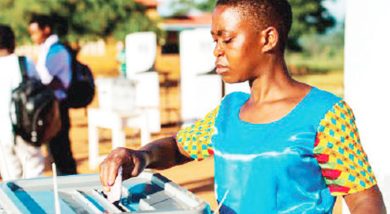Experts decry low contraceptives’ budget
Malawi is racing against time to increase funding for clearing the unmet demand for modern contraceptives to prevent unintended and mistimed pregnancies that cost lives of thousands of Malawian women, terminating the future of girls who plunge into child marriages.
Following a commitment made at the 2012 London Summit on Family Planning, Malawi signed up to the Family Planning 2020 (FP2020) initiative which requires government to increase the uptake of modern contraceptives among married and unmarried sexually active women to 60 percent by 2020, with a focus on the youth aged 15-24.
According to the country’s implementation plan for family planning, government needs up to K45 billion (an equivalent of $94.6 million) to reduce the unmet need for contraception from nearly 26 percent to 11.3 percent.

Second Lady visited Malawi in July
However, the financing of family planning, which remains hugely donor dependent, falls short of the target which was expected to reach out to 414 000 new users and avert 2.15 million unwanted pregnancies and 7 600 maternal deaths, according to available statistics.
Far from the ambitious plan, national budgets for contraception have risen from a meagre K25 million to K75 million since 2013/14 fiscal year.
Mary Palomba-Phiri, FP2020 contact person in government, described the funding as inadequate, saying the dream to increasing demand for and access to contraceptives will remain a hard-reach target unless Parliament allocates more funds to meet the unmet needs.
Preliminary findings of the 2015 Malawi Demographic and Health Survey (MDHS) shows the uptake of modern contraceptives has risen to 60 percent from about 46 percent.
However, Palomba-Phiri urges against complacency because the promising figure only holds true about married women.
“What about girls who are at the risk of dying of unwanted pregnancies and infections due to low use of contraceptives?” she asked.
Low access to contraception among the youth remains a challenge as MDHS shows adolescent pregnancies have gone up from 26 percent to 29 percent.
“There is need to ensure family planning methods are accessible, acceptable and affordable. To ensure that we need an adequate budget allocation,” the reproductive health officials said.
FP2020 is a global partnership to help the youth, aged 15-24, decide for themselves the right time to have children and the number of children.
The country has delivered the London promise to raise the minimum marriageable age to 18 and to make the reproductive health unit into a standalone directorate in the Ministry of Health.
Agnes Nyalonje, Mzimba North legislator, urged government to increase provision of contraceptives in remote localities where health centres are far apart, families large and the number of unreached women and girls very high.
Of all English—speaking countries, only Kenya has achieved the FP2020 targets—with Tanzania and Rwanda on course to meet the demand.
Malawi has made steady progress in reducing maternal and child mortality, including meeting the Millennium Development Goal (MDG) of reducing child mortality by two thirds by last year.
However, 26 in every 100 babies in the country are unwanted while 19 are mistimed.
The youth are silently sidelined due to myths, misconceptions and long distances to health centres.
As the clocks ticks towards the 2020 deadline, government’s funding remains far below the nearly K26 billion budgeted for procurement of contraceptive commodities. n






